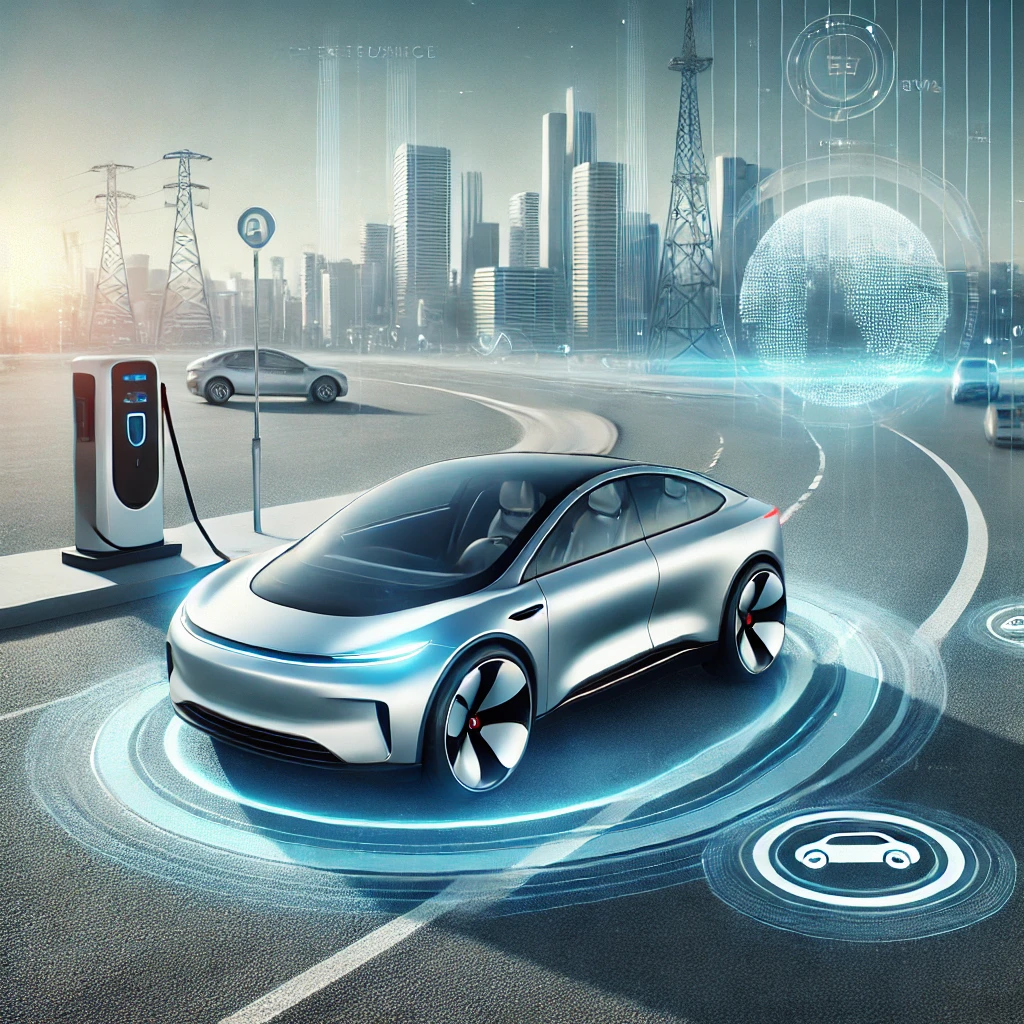The automotive industry is undergoing a dramatic transformation with electric and autonomous vehicles redefining the future of transportation. From sustainability to connectivity, advancements in car technology continue to reshape our mobility experiences. This article explores emerging trends, including electric powertrains, self-driving capabilities, sustainable manufacturing, enhanced connectivity, energy-efficient designs, and urban mobility solutions, which are driving these changes.
1. Electric Powertrains and Extended Range
Electric vehicles (EVs) are at the forefront of this shift, with manufacturers focusing on making them more accessible, efficient, and sustainable. One of the biggest advancements in EV technology lies in battery innovation. Traditional lithium-ion batteries are being replaced by solid-state batteries in some prototypes, which offer higher energy density, faster charging times, and a longer lifespan. As technology improves, charging times may become as short as refueling a traditional car, making EVs more convenient for long-distance travel.
With the expansion of charging networks worldwide, infrastructure is adapting to support EVs. More charging stations are being installed at gas stations, grocery stores, and shopping centers, which will soon make charging as accessible as gas refueling. Fast-charging technology is also being integrated to support road trips and long drives without extended delays.
2. Self-Driving Capabilities and the Future of Autonomy
Autonomous vehicles (AVs) are another groundbreaking innovation, with many automakers and tech companies working toward fully self-driving cars. Today, cars equipped with Level 2 and Level 3 automation—which includes functions like lane-keeping assistance, adaptive cruise control, and automated parking—are already available. Higher levels of automation, such as Level 4 and Level 5, promise hands-free driving in all conditions.
These advancements rely heavily on sensor fusion, which integrates data from cameras, radar, LiDAR, and ultrasonic sensors to create a real-time map of the vehicle’s surroundings. Artificial intelligence (AI) plays a central role, processing this data to make safe, split-second decisions. Although full autonomy may still be years away, major strides are being made in safety and reliability.
3. Sustainable Manufacturing and Recyclable Materials
As EVs and AVs grow in popularity, automakers are also focusing on sustainable production practices. This shift not only reduces carbon emissions but also encourages the use of recyclable and biodegradable materials. For example, companies are experimenting with plant-based fibers, recycled plastics, and aluminum frames, which are both lightweight and environmentally friendly.
Some manufacturers are going a step further by implementing closed-loop recycling processes, where materials from old vehicles are reused in new ones, reducing waste and lowering the environmental footprint of production. Additionally, factories are starting to use renewable energy sources, like wind or solar power, to further minimize emissions during the manufacturing process.
4. Enhanced Connectivity and Smart Features
The integration of connectivity features is transforming cars into smart devices on wheels. With 5G technology becoming more widespread, vehicles are capable of advanced real-time functions like over-the-air (OTA) updates, predictive maintenance alerts, and driver-assist technologies. These updates allow manufacturers to enhance vehicle performance and security without requiring a trip to the dealership.
Connectivity also plays a vital role in vehicle-to-everything (V2X) communication, which enables cars to communicate with each other, traffic signals, and surrounding infrastructure. This technology helps reduce traffic congestion and enhances safety by alerting drivers to hazards, road closures, or weather conditions in real-time. As smart cities grow, V2X communication will enable seamless integration between vehicles and urban infrastructure, creating smoother, safer driving environments.
5. Energy-Efficient Designs and Aerodynamics
Energy efficiency isn’t only achieved through advanced powertrains but also through intelligent vehicle design. Manufacturers are increasingly focusing on aerodynamics and lightweight materials to reduce drag and improve efficiency. Carbon fiber and aluminum are replacing traditional materials like steel, making cars lighter and more fuel-efficient without sacrificing strength or durability.
Aerodynamic designs are not only functional but also stylish, giving future cars a sleek, futuristic appearance. Many concept vehicles incorporate these design principles, boasting angular lines, smooth contours, and low-slung shapes that optimize airflow. These energy-efficient designs, combined with advanced powertrains, extend the range of EVs and improve overall performance.
6. Urban Mobility and Micro-Electric Vehicles
The future of transportation also includes a focus on urban mobility solutions, particularly with the rise of micro-electric vehicles and compact EVs designed for city environments. In densely populated cities, these small vehicles offer a sustainable solution to urban traffic, reducing congestion and lowering emissions. Micro-EVs and electric scooters are already gaining popularity in cities across the globe, especially as governments promote sustainable transport options.
For short-distance commuting, micro-EVs require less space, making them ideal for crowded streets and parking in tight spaces. They are also highly energy-efficient, needing minimal charging infrastructure compared to full-sized EVs. With smart city initiatives and increased emphasis on public transportation integration, micro-EVs will play an essential role in the future of urban mobility.
7. The Role of AI and Machine Learning in Future Cars
AI and machine learning are crucial to the advancement of autonomous vehicles, as they allow vehicles to learn from real-world driving data. By analyzing data from millions of miles driven, AI systems improve in recognizing obstacles, interpreting traffic patterns, and making safer driving decisions.
In addition to autonomy, AI enhances in-car experiences by personalizing settings based on driver behavior. From automatic seat adjustments and climate control to curated entertainment recommendations, AI creates a custom environment. As AI technology advances, vehicles will become smarter and more responsive to driver needs.
A New Era of Transportation
The future of cars promises convenience, sustainability, and safety like never before. As electric and autonomous vehicle technology progresses, we are moving toward an era of clean energy, intelligent connectivity, and optimized driving experiences. This transformation isn’t only about getting from one place to another—it’s about rethinking our approach to mobility, prioritizing efficiency, and reducing environmental impact. With advancements in electric powertrains, autonomous systems, and sustainable manufacturing, the next decade is set to revolutionize how we interact with cars and the world around us.


